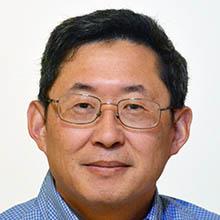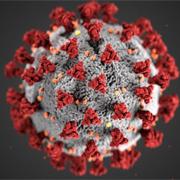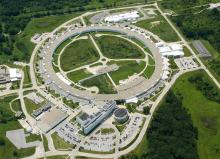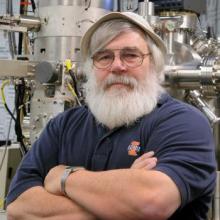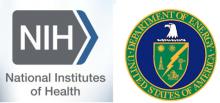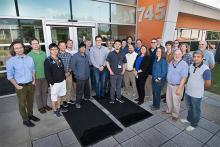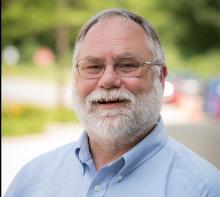News Feed - APS/User News
Yang Ren has been named the recipient of the 2020 “Gopal K. Shenoy Award for Excellence in Beamline Science” at the U.S. Department of Energy’s Advanced Photon Source for creating a world-leading high-energy x-ray diffraction beamline and user program for comprehensive atomic structure studies of condensed matter.

As you may have heard by now, the construction of multiple beamlines for the Advanced Photon Source Upgrade (APS-U) Project will require a staggered installation schedule, which must start significantly ahead of the dark period. This is due to the limited capacity of vendors for critical components such as enclosures, and the need to distribute the effort from local staff and contactors. That means some operating X-ray Science Division (XSD) beamlines will be going off line before the start of the dark period due to the need to move some programs to accommodate feature beamlines, while other XSD beamlines will be interrupted and re-started before APS shuts down for the installation of the new multiband achromat-based storage ring. The XSD, APS, and APS-U managements have developed a draft schedule for beamline closures and program interruptions. While the current stance of Argonne due to COVID-19 will likely affect this schedule, we would like to start communicating with the user communities as early as possible, so that they can plan for any affected research programs.

At this moment, nothing we can say to you, and to your family, friends, and colleagues, is more important than this: be safe, be well. We care about you all. Right now on the Argonne web site you can read an excellent article by Jared Sagoff, of Argonne’s Communications and Public Affairs Division, entitled “Argonne’s researchers and facilities playing a key role in the fight against COVID-19.” It captures the remarkable breadth of scientific power that Argonne is marshalling against the coronavirus. This includes the Argonne Leadership Computing Facility in its role as part of the federal COVID-19 High Performance Computing Consortium, and the National Preparedness Analytics Center, “which is currently helping state emergency management agencies conduct rapid analyses around supply chain resilience in the context of pandemic planning.” By extension, the article reinforces again the unique capabilities and strengths of the Department of Energy’s national laboratory system.

To cooperate with the extension of the stay-at-home order issued March 31 by the Governor of Illinois, Argonne is extending the site restrictions enacted with the Governor’s original order to the end of April. The Lab has ceased all on-site functions except those deemed government critical and will continue to maximize telecommuting. The APS will reman operational to support critical COVID-19 related work and for critical remote research only.

Crucial work on the APS Upgrade (APS-U) continues as an essential component of Argonne’s limited operations following Illinois Governor J.B. Pritzker’s stay-at-home order. That work is limited to necessary personnel and activities for fulfilling project milestones in the near term, including receiving and processing production magnets and power supplies. The current on-site focus is only on acceptance tests of equipment that had just arrived, or was in transit at the time of the Laboratory switching to minimum safe conditions. These activities were authorized only after ensuring work could be done with required social distancing, and safely. The overwhelming majority of the APS-U staff, like Argonne as a whole, is telecommuting for now.
Thousands of processors stacked over six feet high are networked together into the fastest computer in the world. Powerful X-rays produced by accelerating electrons to near the speed of light. Computer software that can model the complex spread of diseases. These are just some of the tools that we here at the Department of Energy are using to tackle the COVID-19 disease outbreak, widely referred to as the coronavirus.
The Advanced Photon Source Users Organization is pleased to announce
that Hsinhan (Dave) Tsai of Los Alamos National Laboratory is the recipient of
the 2020 APSUO Rosalind Franklin Young Investigator Award for his "prolific record of high
impact achievements, driving innovations in instrumental capabilities and fostering new
collaborations."
We regret to inform you that the 2020 APS/CNM Users Meeting scheduled for April 20-24, 2020, at Argonne National Laboratory is being canceled due to the COVID-19/coronavirus outbreak. The action to cancel the APS/CNM Users Meeting is being taken to protect the health of all meeting attendees and the well being of our entire community. We are taking this action out of an abundance of caution.
Researchers who carry out biological studies at the APS were awarded four of the seven 2020 Protein Society Awards for their lasting impact on protein science.
Nestor J. Zaluzec (Photon Sciences Directorate) has been named the recipient of the 2020 Peter Duncumb Award for Excellence in Microanalysis by the by the Microanalysis Society for his long-term and sustained body of work and accomplishments in advanced x-ray and electron spectroscopy of materials, including instrumentation development, methodology, software, and educational outreach to the worldwide community.
Information in the media about coronavirus (COVID-19) research at Argonne and the APS continues to mount.
A joint National Institutes of Health-U.S. Department of Energy bioimaging working group has organized a dialog between their respective research communities. A public webinar series designed to inform the biological research community about advanced bioimaging capabilities and how to access them and describe associated data challenges has been scheduled. In parallel, the agencies are soliciting information from the research community about unaddressed research needs through a Request for Information that will be published later in March.
A potential drug target has been identified in a newly mapped protein of SARS-CoV-2, the virus that causes coronavirus disease 2019 (COVID-19). The structure was solved by a team including the University of Chicago, the U.S. Department of Energy’s Argonne National Laboratory, Northwestern University Feinberg School of Medicine and the University of California, Riverside School of Medicine.
With funding from the DOE for a two-year pilot program, scientists from the five light sources have formed a Data Solution Task Force that will demonstrate, build, and implement software, cyberinfrastructure, and algorithms that address universal needs between all five facilities.
Here's how to contact the APS Users Organization with any questions/concerns/feedback/ideas/problems.
Mark Beno, a senior chemist at the U.S. Department of Energy’s Argonne National Laboratory, has been posthumously awarded the distinction of Fellow by the American Association for the Advancement of Science for his expertise in chemical crystallography.
The Physical Chemistry Division of the American Chemical Society has announced that Lin X. Chen has received the 2020 Award in Experimental Physical Chemistry. Chen is a senior chemist in the Chemical Sciences and Engineering division of the U.S. Department of Energy’s Argonne National Laboratory, as well as a professor in the Department of Chemistry at Northwestern University.
From "Trilobites" in The New York Times, January 13, 2020: Grasshoppers have to deal with blood pressure issues when they are upside down, according to research at the Advanced Photon Source.
From the Smithsonian Magazine SMARTNEWS: A team of researchers first stumbled upon their discovery while examining grasshoppers in the [Advanced Photon Source at] Argonne National Laboratory, a device that uses synchrotron X-rays to generate precise, high-quality images and video.
The 22nd National School on Neutron and X-ray Scattering will be held on June 13-27, 2020, at the U.S. Department of Energy’s Argonne National Laboratory and Oak Ridge National Laboratory.

